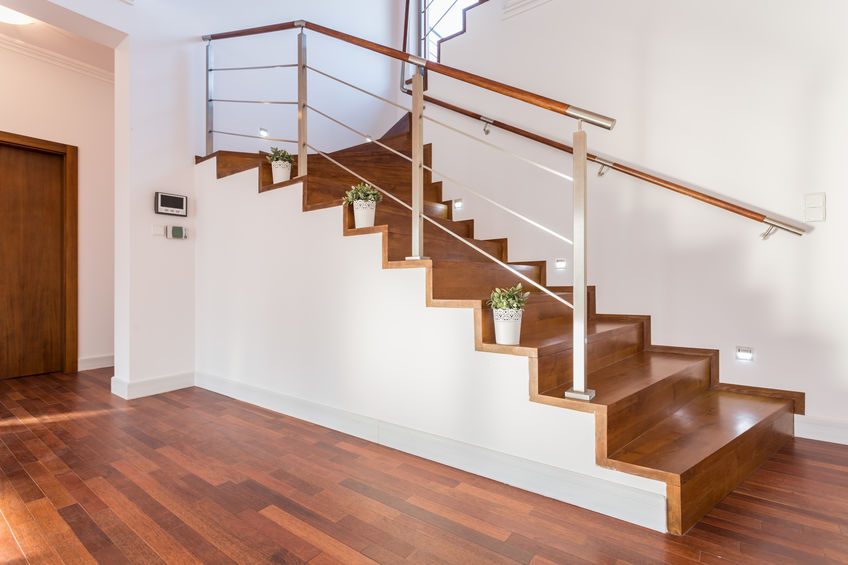
- Straight Stairs
These stairs are the most common and they can be found in many homes because they are very affordable. Straight stairs are ideal due to their simplicity as they can easily be connected and attached at the top and bottom without the need of any support. With regard to handrails and railings, you can easily install them in these straight stairs.
The only con is that straight stairs occupy a significant amount of space and this can have a huge effect on your specific design.
- Straight Stairs with a Central Landing
These stairs are quite fitting for houses that have a high ceiling. They require a central landing where the stairs will be 12 feet high or more. Often, the stairs can have more than the normal number of risers thus similarly requiring a central landing.
Straight stairs with a central landing occupy a very huge amount of space. This means that some homeowners may not prefer them, making them look for other suitable alternatives.
- L Shaped Stairs
L-shaped stairs entail an alteration and variation of the normal straight stairs but with a bend at some designated portion of the stairs. At many times, the bend is 90 degrees and it is attained through the addition of a well-placed landing at the transition point of the bend. This turn could therefore be adjacent to one end or the other or simply just in the middle. They make the house very aesthetically pleasing and they occupy a very small amount of space.
The presence of the wider landing is very essential, as it aids in the maneuvering and navigation by breaking the large flight of stairs. They are relatively difficult to build as they are very technical due to the need of anchoring and support at the turn and at the landing as well. This therefore makes them very expensive to build and install.
- Spiral Stairs
Spiral homes are usually associated with noble homes. They go after a helical arc, are very compact and they have treads and radiating steps, which are attached to a central post. They spiral upwards to the floor above and can normally be found in town dwellings or beach houses. The main reason behind this is that they are very compact and thus occupy a very tiny and limited space.
- U-Shaped Stairs
They are simply two flights of stairs parallel to each other connected by a landing that necessitates a 180-degree turn in the immediate walk line. These stairs go in the opposite directions and entail a well-placed landing at the switchback. They occupy a very little amount of space and they are very appealing.
However, they have one disadvantage, which is that they render it very difficult to move any sizeable items upstairs.
- Winder Stairs
Winder stairs entail triangular shaped steps placed at the corner of the transition. They are simply a variation or alteration of the L shaped stairs. These stairs do not have a landing hence the presence of the triangular wedge at the turn. They have not been commonly used in modern contemporary homes, but ancient and older ones. Despite this, they are becoming more popular with the advancement of time. There is therefore a huge surge of their installation in smaller but trendy homes.
The aforementioned are the varying types of stairs that you can have at your home. They have been discussed exhaustively. Therefore, you are now fully aware of the stairs that can be suitable and appropriate for your home. The information should help you make a decent choice based on your specific budget and the space at your disposal. This helps ensure that you get the best possible experience without any issues.
